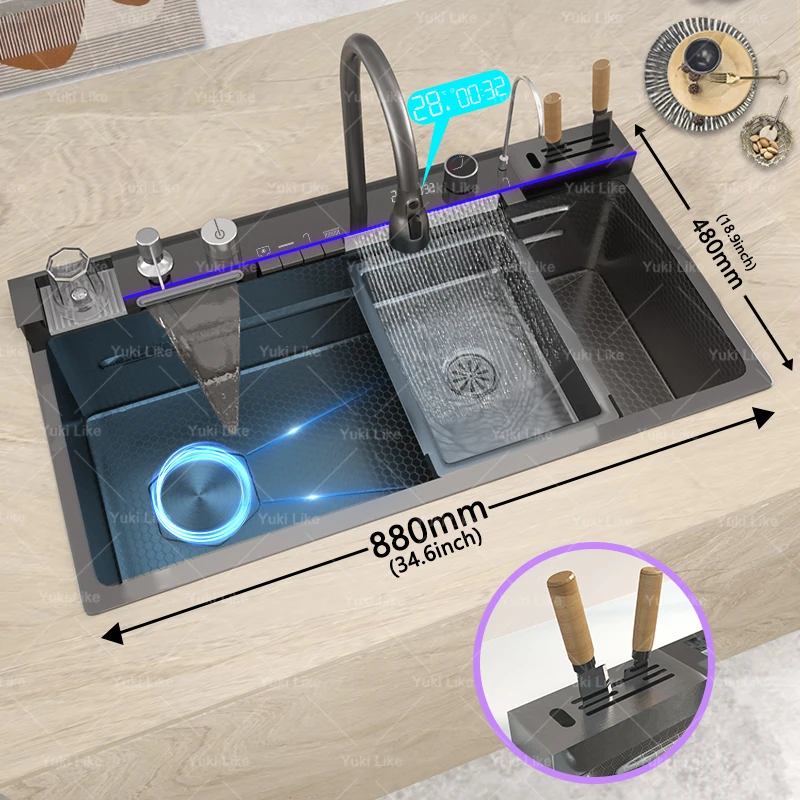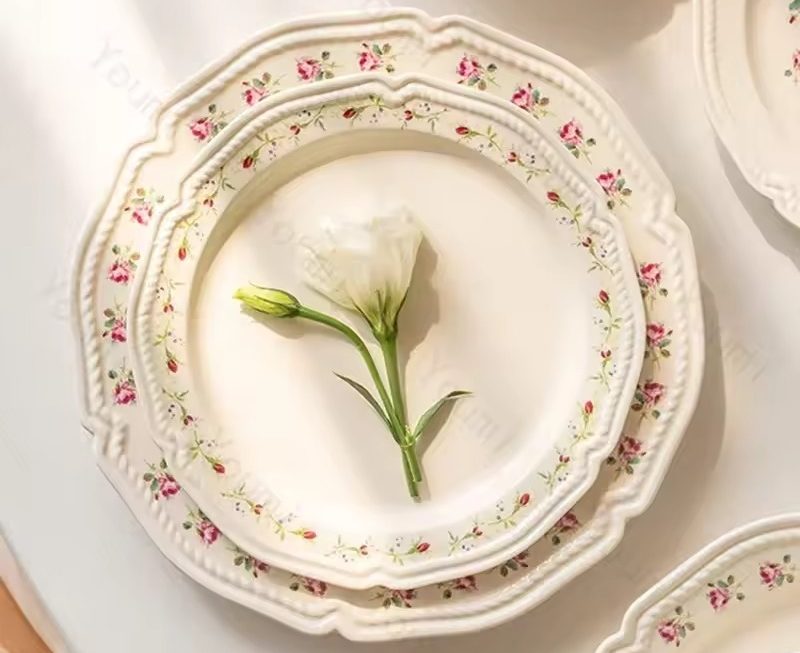Introduction to DIY Kitchen Sink Installation
Embarking on a DIY kitchen sink installation can be a gratifying endeavor. How to install kitchen sink? With the right tools, a little know-how, and this guide, you can upgrade your kitchen’s functionality and aesthetics. We will walk you through each step of the process, ensuring you know exactly what’s needed to successfully install your kitchen sink.
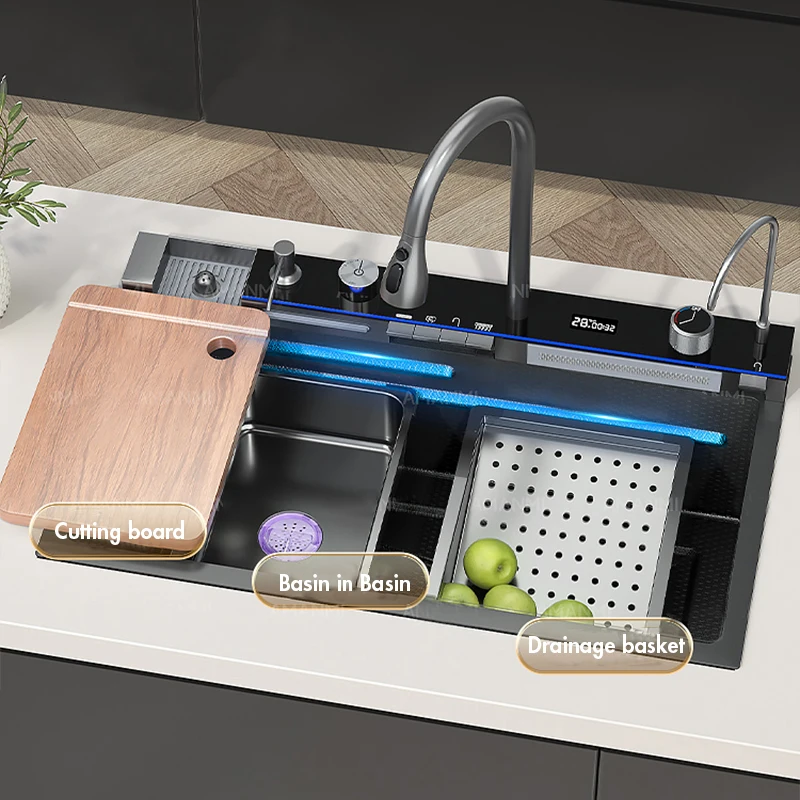
Assembling the necessary tools and materials is the first move towards a successful installation. Some of these include a jigsaw, drill, screwdriver, and plumber’s putty, among others. Detailed information on these will follow in the next section of the guide.
The steps to install a kitchen sink range from initial measurements to the final leak test. We recommend reviewing these steps carefully before starting and ensuring you are comfortable with each stage of the process.
The choice between tackling the installation yourself or hiring a professional often boils down to your confidence in your DIY skills, available time, and budget. We will explore these considerations in more detail later in the guide.
Lastly, maintaining your newly installed kitchen sink is vital for preserving its condition and ensuring longevity. Simple practices like regular cleaning and avoiding harsh chemicals go a long way. We’ll cover maintenance best practices in-depth to help you keep your sink in top shape for years to come.
Whether you’re an experienced DIY enthusiast or a beginner looking to challenge yourself, this guide will provide you with the knowledge needed to install a kitchen sink. Let’s dive in and begin this exciting transformation for your kitchen.
Tools and Materials Needed for the Job
Gathering the right tools and materials is crucial for a smooth kitchen sink installation. Here’s what you need to begin:
- Tubing cutter: For precise pipe cutting.
- Jigsaw: To cut the countertop opening.
- Drill/driver: Needed for pilot holes and driving screws.
- Screwdriver: For adjusting and securing components.
- Mechanic’s pliers: Helpful for gripping and twisting.
- Adjustable wrench: Essential for tightening and loosening nuts.
- Tape measure: To measure and ensure accuracy.
- Hacksaw: For cutting any metal parts.
- Utility knife: To trim materials and clean edges.
- Straight edge: To mark straight lines for cutting.
- Spade bit: For starting holes in your countertop.
Make sure to have these items handy before starting the installation process of your kitchen sink. These tools will help you measure accurately, make precise cuts, and secure all components properly, reducing the risk of errors during installation.
Having quality materials is just as important as having the right tools. Plumber’s putty, silicone caulk, and PVC primer and cement are materials that ensure a watertight seal and secure pipe connections. Do not forget the plumber’s putty for the strainer and silicone caulk for sealing the sink’s edge.
Remember, investing in high-quality tools and materials can make the difference between a successful DIY project and a potential disaster. It’s also worth considering that some specialized tools may be a one-time purchase if you do not plan on frequent DIY plumbing projects.
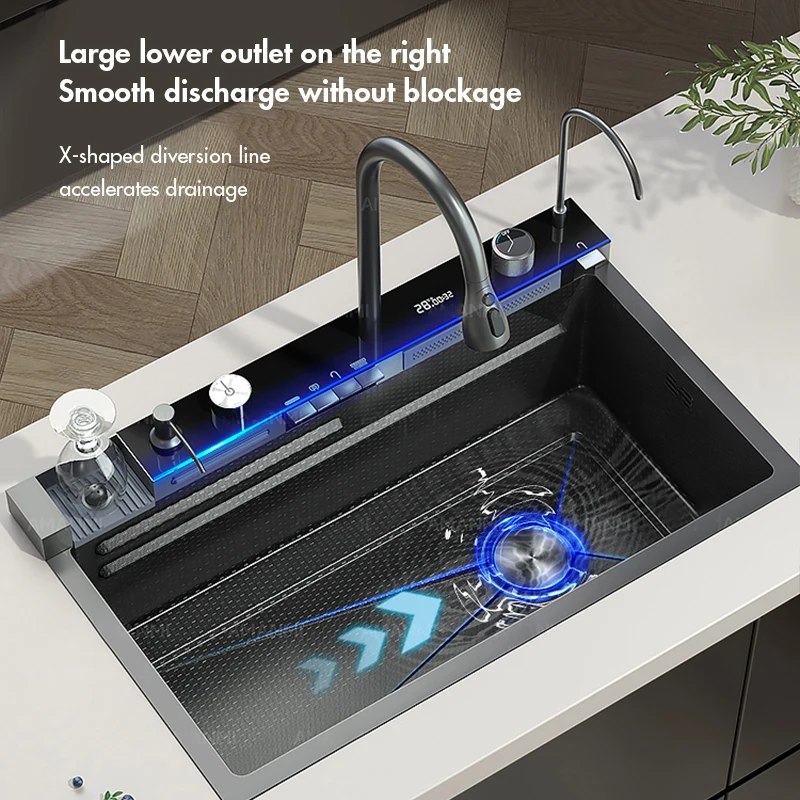
Step-by-Step Guide to Installing Your New Kitchen Sink
Step 1: Measure and Mark the Sink Layout
Initiate by marking the counter’s back edge to center the sink. Use a template if your sink comes with one. Align it with the mark, setting it back from the counter. Outline the template with a pencil for accuracy. Lack a template? Use two-inch tape to frame the sink’s area instead. Ensure a gap of one-and-a-half inches from the backsplash is maintained. Outline your sink’s position and set aside.
Step 2: Mark the Cut Lines
Measure your sink lip, and subtract 1/8 inch for precision. Mark the inner outline accordingly with a straightedge. For the corners, go by the sink’s corner radius to mark. This will guide your cutting equipment later.
Step 3: Cut the Sink Opening
Secure a scrap of wood over the cutout area to avoid countertop damage. Drill a starting hole at each marked corner with a spade bit. Use a jigsaw to follow the lines you’ve marked carefully. Gently cut out the opening, and trial fit your sink.
Step 4: Install the Faucet and Sink Components
Turn your sink upside down on a padded surface. Pass the faucet parts through the sink holes and secure them from the bottom. Check if the faucet swings freely.
Step 5: Secure the Strainer and Drain
Apply plumber’s putty under the strainer lip and fit it through the drain hole. Add the gasket, washer, and locknut underneath and tighten it using pliers.
Step 6: Set the Sink and Connect the Water Supply
Wipe the countertop clean around the cut-out. Flip the sink right-side up. Apply silicone caulk evenly around the edge. Settle the sink into the cutout, ensuring a snug fit. Wipe away extra caulk and attach any required mounting clips.
Step 7: Install the Drain Pipes
Start with the tailpiece and work your way to the waste line. Connect the necessary PVC pipes using cut-and-dry-fit methods. Secure connections with PVC primer and cement. Hold together firmly for a durable fit.
Step 8: Connect the Dishwasher Drain
If you have a dishwasher, find the drain connection on your sink’s tailpiece. Attach the dishwasher hose with a clamp and make sure it arcs high under the countertop.
Step 9: Test for Leaks
Before using, remove the tap’s aerator to prevent clogging. Gradually open the water supply and check for leaks. Run water at full pressure and fill the sink to test the drain. Adjust connections if any leaks are found.
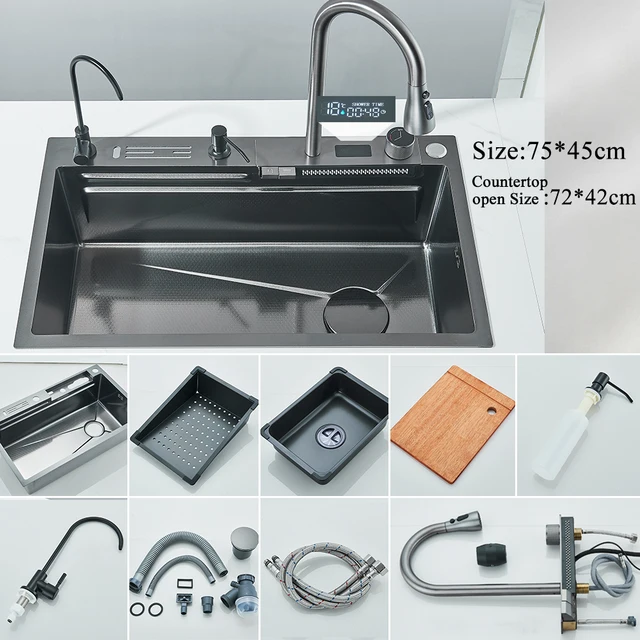
Considerations for DIY vs. Professional Installation
Deciding whether to install a kitchen sink by yourself or to hire a professional involves several factors. Consider your own experience, available time, budget, and the complexity of the installation. Below are some points to ponder before making your decision:
- Skill Level: Do you have the necessary plumbing skills to install a kitchen sink? If not, consider a professional.
- Time Commitment: Are you able to dedicate the required time for a DIY installation?
- Tools: Do you have all the needed tools? Renting or buying them may add to the cost.
- Budget: DIY can save on labor costs, but errors may incur extra expenses.
- Complex Jobs: If the job requires significant plumbing changes, a professional may be needed.
- Guarantees: Professionals usually offer warranties on their work. Think about long-term assurance.
- Safety: If you’re not confident in handling tools and materials, it’s safer to hire a pro.
After weighing these considerations, if you decide on a DIY approach, be sure to follow the steps closely, and take your time to ensure a job well done. If hiring a professional feels right, get multiple quotes and check the plumber’s credentials and reviews.
Best Practices for Maintaining Your Kitchen Sink
To keep your newly installed kitchen sink in top condition, follow these maintenance tips:
- Avoid Harsh Chemicals: Do not use harsh cleaners as they can harm the sink’s finish. Stick to mild soap and water.
- Regular Cleaning: A regular wipe-down with a soft cloth and mild cleaner can prevent buildup and maintain shine.
- Deep Cleaning: Occasionally use baking soda and vinegar for a deep clean that’s also gentle on the sink’s surface.
- Aerator Care: Remove and clean the faucet aerator every few months to avoid clogs and ensure strong water flow.
- Check for Leaks: Periodically inspect under the sink for leaks to catch any issues early.
- Prevent Clogs: Use a strainer to catch debris and avoid putting grease or food waste down the drain.
These simple steps will prolong the life and beauty of your kitchen sink, and help you avoid common problems that can arise from neglect.
Troubleshooting Common Sink Installation Issues
Once your kitchen sink is installed, you may encounter a few common issues. Don’t worry – with some basic troubleshooting, you can often resolve these problems quickly and without the need for a professional. Here are some typical installation issues and how to fix them:
Leaky Faucet Connections
A common post-installation problem is a leaky faucet. Check all connections, tightening them carefully. If the leak persists, ensure washers and gaskets are properly seated.
Misaligned Sink
If your sink isn’t aligned properly with the countertop, loosen the mounting clips slightly, adjust the sink, and retighten the clips. An even bead of caulk helps create a proper seal.
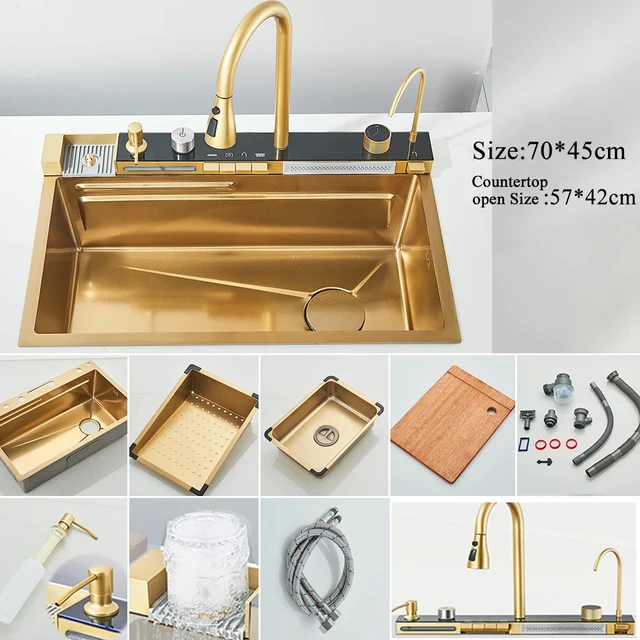
Inadequate Sealant Application
Gaps in sealant can cause leaks. If your sink is leaking at the sealant line, remove any old caulk, clean the area, and reapply a new, even bead of silicone caulk.
Clogged Drain Pipes
Sometimes, debris can clog the drain after installation. Disassemble the trap and check for obstructions. Clear any blockage and reassemble.
Poor Water Flow
Low water flow may be due to a clogged aerator. Simply unscrew the aerator, clean out any sediment, and screw it back on.
Water Not Draining Properly
Ensure the sink’s drain is not blocked and that the P-trap isn’t too tight, causing a water dam. Adjust if necessary.
By following these tips, you should be able to tackle most common kitchen sink installation issues. Remember to use the right tools and follow safety precautions while troubleshooting.
Final Thoughts and Next Steps for Your Kitchen Upgrade
Completing a DIY kitchen sink installation can be a rewarding experience. Not only have you improved your kitchen’s look and functionality, but you’ve also gained invaluable DIY skills. As you admire your handiwork, consider these final thoughts and steps to enhance your kitchen further.
- Continue Learning: Consider tackling other DIY projects in your kitchen. Maybe it’s installing new cabinets or upgrading your countertops.
- Essential Tools: Hang on to your installation tools. They’re essential for future maintenance or new projects.
- Share Your Experience: Help others by sharing your installation journey. Use social media or DIY forums to offer advice.
- Evaluate Your Needs: Think about what else your kitchen needs. Would a new backsplash complement your sink? Could you benefit from smarter storage solutions?
- Plan Your Budget: If you’re planning more upgrades, keep a budget. It’s easy for costs to grow as you improve your kitchen.
- Seek Inspiration: Look at kitchen design trends for inspiration. Magazines, websites, and home improvement shows are great resources.
- Maintenance Routine: Set up a regular schedule to clean and maintain your new sink and any other kitchen updates.
Your journey to a better kitchen doesn’t end here. With your new kitchen sink installed, you have started on a path that can lead to more improvements. Your kitchen is the heart of your home, and keeping it up-to-date will add value to your home and joy to your daily life. Keep learning, exploring, and growing your DIY skills. The possibilities are endless!
